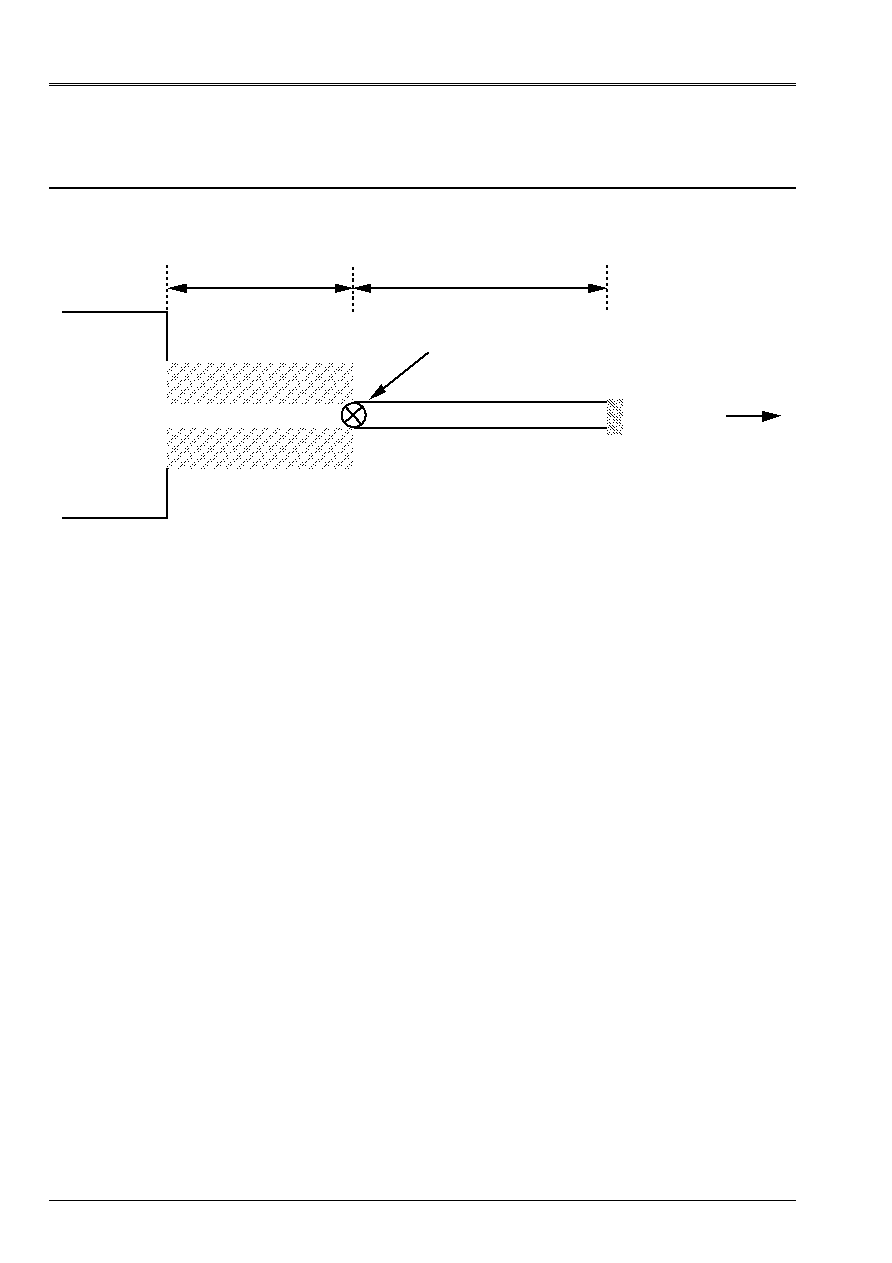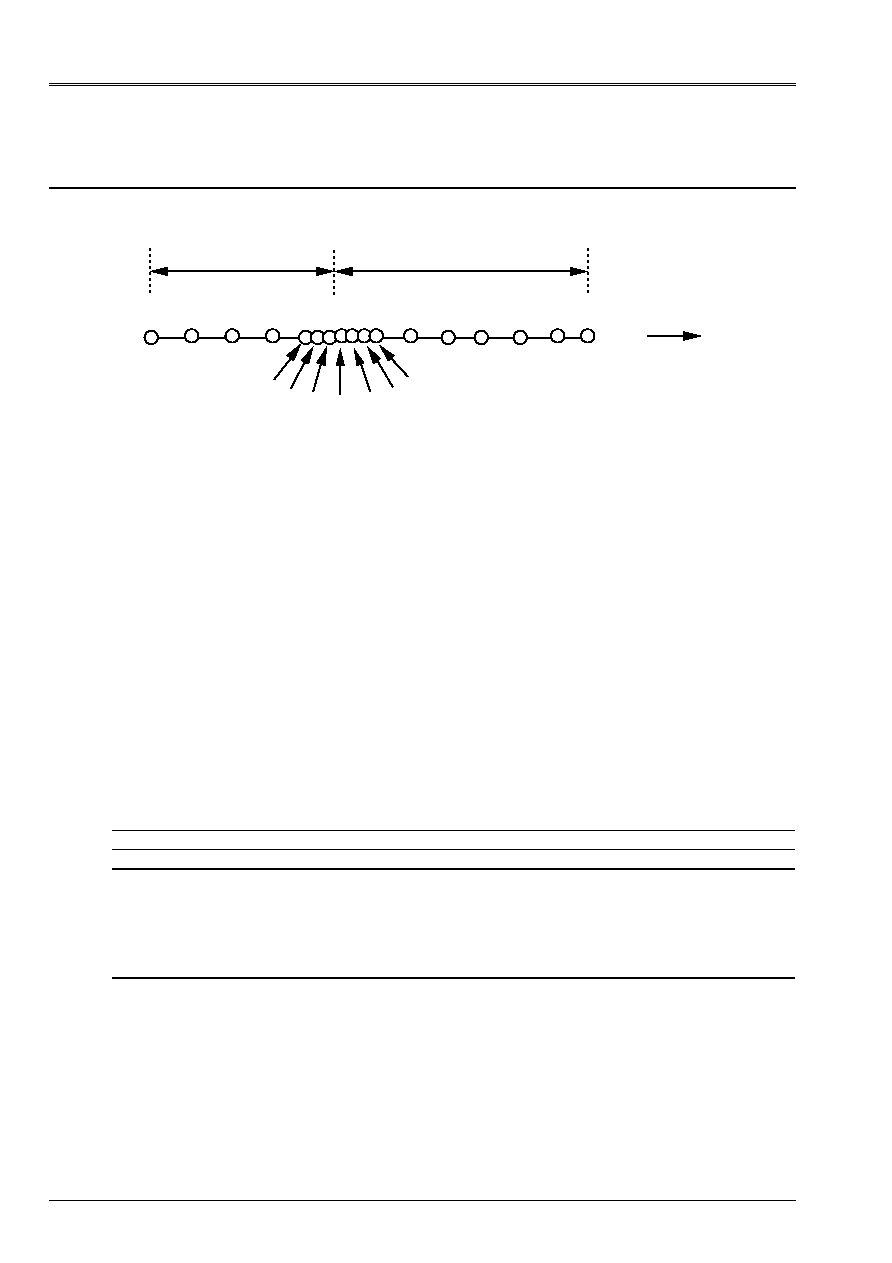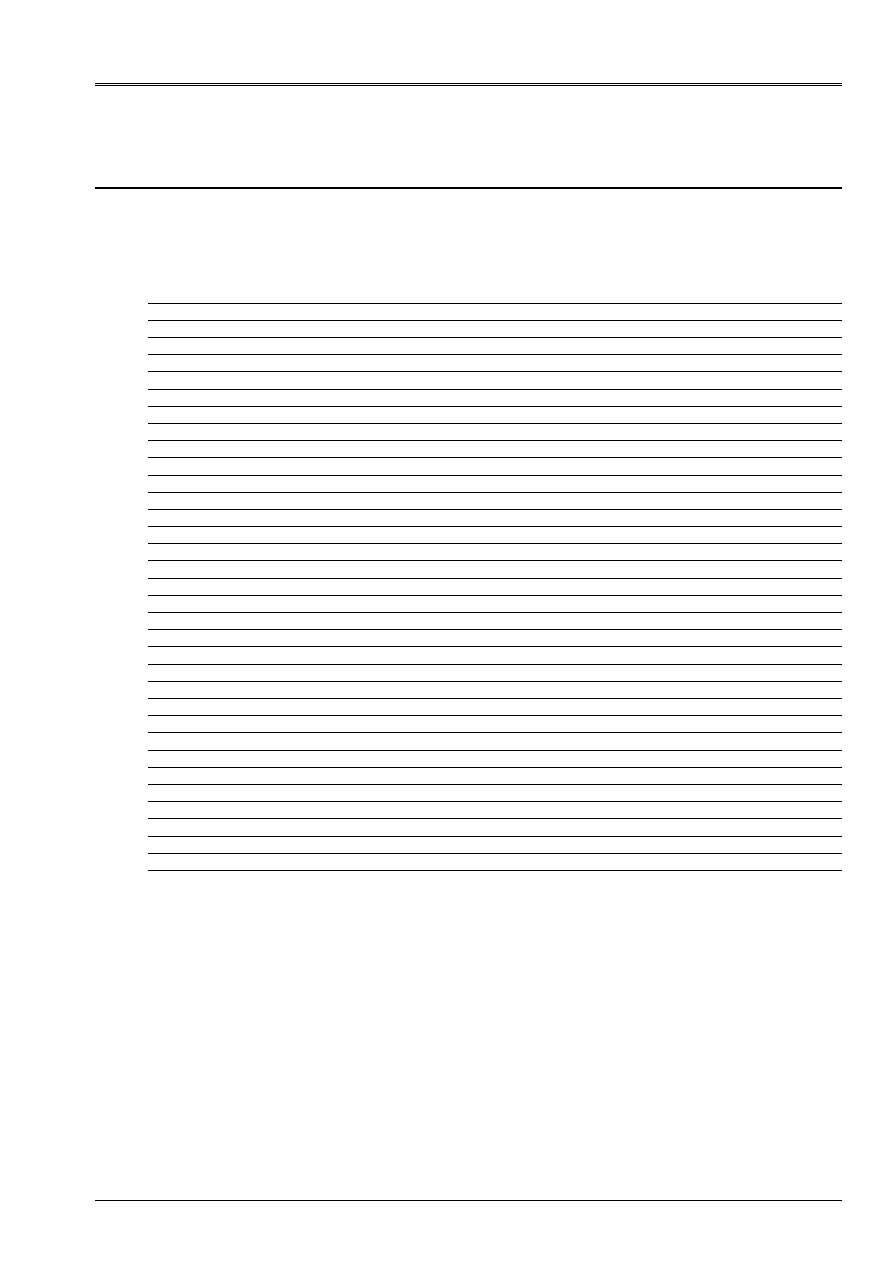
Code_Aster
®
Version
5.0
Titrate:
SDLL105 Pipe subjected to sources of random fluid excitations
Date:
30/08/01
Author (S):
J. PIGAT
Key
:
V2.02.105-B
Page:
1/6
Manual of Validation
V2.02 booklet: Linear dynamics of the beams
HT-62/01/012/A
Organization (S):
EDF/RNE/AMV
Manual of Validation
V2.02 booklet: Linear dynamics of the beams
V2.02.105 document
SDLL105 - Pipe subjected to sources
random fluid excitations
Summary:
A right piping embedded at an end in the wall of a tank and supporting a mass with the other
end is subjected to a fluid excitation.
The excitation is defined by its spectral concentration of power in the form of a “white Gaussian noise”.
It covers all the types of source established in the code:
·
source of flow-volume,
·
source of flow-mass,
·
source of pressure,
·
source of force,
·
imposed effort.
One is interested in the spectral concentration of power of the response in a degree of freedom of pressure located on
node supporting the mass.
The random dynamic response is given here moving absolute.

Code_Aster
®
Version
5.0
Titrate:
SDLL105 Pipe subjected to sources of random fluid excitations
Date:
30/08/01
Author (S):
J. PIGAT
Key
:
V2.02.105-B
Page:
2/6
Manual of Validation
V2.02 booklet: Linear dynamics of the beams
HT-62/01/012/A
1
Problem of reference
1.1 Geometry
Tank
m = 10 kg
SOURCE
dx
4.0 m
acoustic section
6.0 m
section accoustics-mechanics
Circular pipe of section:
External diameter: 0.1 m
Thickness: 3 mm
One does not take account of the field of gravity.
1.2
Material properties
Young modulus of the pipe:
E = 2.1 E+11 NR
Coefficient of compressibility of the pipe:
= 0.3
Density of the pipe:
= 7800 kg/m
3
Density of the fluid:
F
= 8.3 kg/m
3
Celerity of the fluid:
C = 495 m/s
1.3
Boundary conditions and loadings
The DDL Dy, dz, drx, dry, drz are locked for all the pipe.
On the acoustic section dx is also locked and the only free DDL are NEAR and PHI.
At the end on the side tank: CLOSE = 0. PHI = 0.

Code_Aster
®
Version
5.0
Titrate:
SDLL105 Pipe subjected to sources of random fluid excitations
Date:
30/08/01
Author (S):
J. PIGAT
Key
:
V2.02.105-B
Page:
3/6
Manual of Validation
V2.02 booklet: Linear dynamics of the beams
HT-62/01/012/A
2
Reference solution
2.1
Method of calculation used for the reference solution
No reference solution. The values tested for the not-regression are those obtained with
version 3.02.17.
2.2
Results of reference
Spectral concentration of power of the pressure to the node at the right end of the tube, the frequencies
10, 12, 14, 36, 38, 40 Hz. These frequencies are close to the two Eigen frequencies catches in
count (12.38 and 37.36 Hz).
2.3 References
bibliographical
[1]
C. DUVAL “Dynamic response under random excitations in Code_Aster: principles
theoretical and examples of use " - Note HP-61/92.148

Code_Aster
®
Version
5.0
Titrate:
SDLL105 Pipe subjected to sources of random fluid excitations
Date:
30/08/01
Author (S):
J. PIGAT
Key
:
V2.02.105-B
Page:
4/6
Manual of Validation
V2.02 booklet: Linear dynamics of the beams
HT-62/01/012/A
3 Modeling
With
3.1
Characteristics of modeling
A7
A6
A5
A4
A3A2 A1 AM1AM2 AM3AM4
AM5 AM6 AM7 AM8
AM10
AM9
6.0 m
4.0 m
dx
Elements used for the pipes:
FLUI_STRU
Element used for the mass in AM10:
DIS_T
In all the calculation cases, the exiting spectral concentration is a white Gaussian noise of level 1.
The sources of flow-volume and flow-rate pressures are applied to node AM1.
The sources of mass and force are applied between nodes AM1 and AM2.
The last calculation case corresponds to a force imposed on node AM10 in the direction dx.
The clean modes of frequency in the interval [0, 100 Hz] were taken into account in calculation,
that is to say the first two modes.
Damping is introduced in modal form into the operator of dynamic response random.
For all the calculation cases, it is taken equal to 1%
3.2
Characteristics of the mesh
A number of nodes: 17
A number of meshs and types: 16 SEG2, 1POI1
3.3 Functionalities
tested
Controls
MODE_ITER_SIMULT
CONSTANT DEFI_INTE_SPEC
DYNA_ALEA_MODAL EXCIT SIZE
:
“SOUR_DEBI_VOLU”
SIZE
:
“SOUR_DEBI_MASS”
SIZE
:
“SOUR_PRESS”
SIZE
:
“SOUR_FORCE”
SIZE
:
“EFFO”
ANSWER
REST_SPEC_PHYS
3.4 Remarks
The spectral concentrations of fluid source are expressed in their physical units. For a source
of volume flow rate in (m
3
/S)
2
/Hz.

Code_Aster
®
Version
5.0
Titrate:
SDLL105 Pipe subjected to sources of random fluid excitations
Date:
30/08/01
Author (S):
J. PIGAT
Key
:
V2.02.105-B
Page:
5/6
Manual of Validation
V2.02 booklet: Linear dynamics of the beams
HT-62/01/012/A
4
Results of modeling A
4.1
Values of not-regression tested
Values of the spectral concentration of acceleration at point PB25:
Frequency
Type of source
Aster
10 Hz
SOUR_DEBI_VOLU
9.1954E+11
12 Hz
SOUR_DEBI_VOLU
4.3709E+13
14 Hz
SOUR_DEBI_VOLU
3.6428E+12
36 Hz
SOUR_DEBI_VOLU
1.1142E+13
38 Hz
SOUR_DEBI_VOLU
3.6976E+13
40 Hz
SOUR_DEBI_VOLU
2.6238E+12
10 Hz
SOUR_DEBI_MASS
1.3347E+10
12 Hz
SOUR_DEBI_MASS
6.3448E+11
14 Hz
SOUR_DEBI_MASS
5.2879E+10
36 Hz
SOUR_DEBI_MASS
1.6173E+11
38 Hz
SOUR_DEBI_MASS
5.3675E+11
40 Hz
SOUR_DEBI_MASS
3.8088E+10
10 Hz
SOUR_PRESS
9.5991E+00
12 Hz
SOUR_PRESS
2.5952E+02
14 Hz
SOUR_PRESS
1.2365E+01
36 Hz
SOUR_PRESS
3.2428E+00
38 Hz
SOUR_PRESS
1.3681E+01
40 Hz
SOUR_PRESS
1.1649E+00
10 Hz
SOUR_FORCE
1.9931E+05
12 Hz
SOUR_FORCE
5.3887E+06
14 Hz
SOUR_FORCE
2.5675E+05
36 Hz
SOUR_FORCE
6.7334E+04
38 Hz
SOUR_FORCE
2.8408E+05
40 Hz
SOUR_FORCE
2.4189E+04
10 Hz
EFFO
2.6542E03
12 Hz
EFFO
4.5780E02
14 Hz
EFFO
9.0980E04
36 Hz
EFFO
3.3472E02
38 Hz
EFFO
0.1186
40 Hz
EFFO
8.8587E03
4.2 Parameters
of execution
Version: STA 5.02
Machine: SGI-Origin 2000
System:
IRIX 64
Overall dimension memory:
8 megawords
Time CPU To use:
3.21 seconds

Code_Aster
®
Version
5.0
Titrate:
SDLL105 Pipe subjected to sources of random fluid excitations
Date:
30/08/01
Author (S):
J. PIGAT
Key
:
V2.02.105-B
Page:
6/6
Manual of Validation
V2.02 booklet: Linear dynamics of the beams
HT-62/01/012/A
5
Summary of the results
This test makes it possible to pass in the options corresponding to the various types of source. It acts
primarily of a test developer.
Not having a reference solution, it is simply a question of not regressing between the versions.





